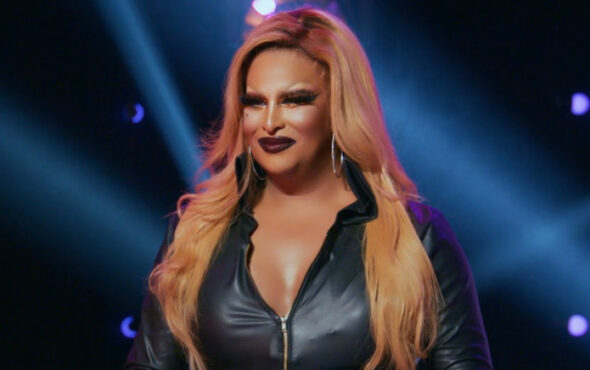
Safe spaces have a long tradition as a political instrument in feminist movements. Collective experiences of gendered violence resulting from a structural inequality of power gave rise to the desire for spaces that were more free from patriarchy. In the 1970s in Germany, the feminist endeavour to create safer spaces was called Frauenräume (“women-spaces” in English), but many participants did not feel safe in them.
FLINTA* is an attempt to open up autonomous feminist spaces for people who do not fall under the category “woman” or feel they don’t belong to it, but are nonetheless oppressed and/or restricted by the patriarchal system. Searching for a term that includes queer people as well is not just a linguistic struggle for visibility but also a structural and physical one.
In spaces that are run by white cis women, there is a lack of sensitivity towards transmisogyny or misogynoir.”
The acronym FLINTA* stands for: female, lesbian, inter, non-binary, trans and agender people. The * highlights all gender and non-gender. It’s a reference to the binary aspect of the categories man and woman. The asterisk is a disruptive factor, a reminder that FLINTA has emerged from a binary system and is therefore still unable to capture what it is supposed to. Ultimately, safer spaces emerge from shared experiences of discrimination and oppression. Hegemonies that have not yet been overcome. As long as the heteronormative structures exist, the asterisk will probably remain.
In the 1990s, lesbians began using the term FrauenLesben (“WomenLesbians”) to create visibility for themselves in so-called Frauenräume at that time. The word FrauenLesben quickly changed from a term for sexual orientation to an expression of gender identity: some daddies, butches, and transmasculine people identified as lesbians rather than women in their communities and created, next to theorists like Monique Wittig, awareness that lesbianism is not necessarily linked to femininity or womanhood. These FrauenLesben-Räume then gradually opened up to FLT* people: females, lesbians, and trans people. This paved the way for lesbians to continue creating connections, exchanging ideas, and building safer spaces for themselves and their community. Gradually, other identity groups were welcomed: inter, non-binary, and agender people, which together form today’s acronym FLINTA*.
https://www.gaytimes.co.uk/originals/how-i-learned-to-embrace-the-words-butch-lesbian/
However, the problem with the term, which has become widespread in Germany, is that some of the letters in the acronym can easily fall by the wayside and may be tolerated but not really welcomed and looked after in any kind of meaningful way. Many people who would fall into these categories are marginalised in multiple ways and additionally affected by ableism, antisemitism, anti-Black, or anti-Muslim racism.
“In spaces that are run by white cis women, there is a lack of sensitivity towards transmisogyny or misogynoir, for example,” says Sophie Rauscher, German co-host of the trans sein (en. “being trans”) podcast. In trans sein, Sophie talks together with Gen Eickers about the lack of inclusivity of FLINTA* in several episodes, such as “Sprache” (en. “language”) or “Lesbe” (en. “Lesbian”): “Intersex people that [identify as] cis male, for instance, are often excluded. Organisers claim they explicitly don’t welcome cis men at their FLINTA*- only parties, but that should not be possible with an I in the acronym. Trans people are sometimes read as cis males. There are trans males who pass as cis, as well as trans females who are not perceived as female enough. People who are not perceived in the same way as the dominant group are often forced to come out.”
The Feminist Fight Day on the 8 March in Germany, formerly known as International Women’s Day, repeatedly addresses the problematic nature of the term. Trans and non-binary speakers make their voices heard from the floats at the protest marches in Berlin. They don’t feel welcome, they say, even though they are surrounded by thousands of people who all describe themselves as feminists.
This is a protest that, for example, includes vulvas as a symbol of the feminist movement on posters, t-shirts, and banners. It should be clear that reducing feminism to genitals can never be inclusive. Situations like these are just further proof for the fact that queerfeminism and gender-exclusive spaces can never really go hand in hand. The experiences of people who are trans, lesbians, and/or nonbinary are often characterised by the fact that gender is fluid or undefined. “As feminists, we have reached a point where we despise patriarchy and not primarily men and masculinity (even if they play decisive roles in it),” continues podcaster Sophie Rauscher.
Anyone who uses the acronym FLINTA* as a synonym for cis heterosexual women has misused it. There is no FLINTA* without the LINTA. Although it includes cis females, it does not represent them exclusively. The meaning of each letter is important when using it, as is the question: Why are you using it? Who are you referring to? If you only want to include women, just say women instead of naming other groups of people who should feel welcome in theory but who are not accommodated in practice and are thus erased.
https://www.gaytimes.co.uk/life/what-is-polari/
While the term FLINTA* has failed to create the representation and inclusivity many may have hoped for, it has been helpful in the process of defining aims. As indicated at the beginning, the term FLINTA* is not perfect, but an attempt. Looking back at the history of the word, the current umbrella term can be seen, with some hope, as one step of many to come. It has helped to spread more awareness thanks to the educational work of lesbian, inter, non-binary, trans and agender people.
Since FLINTA* was created and has gained traction, more and more physical spaces have been established for those who feel included in this term. The important question remains: Who do I want to address with this acronym? Including one group often automatically excludes another. Which means, once you have figured out who you want to address, the second question is always who you will exclude. Especially when the actual question should be: What do you want to stay outside much rather than who?
“I no longer use the term FLINTA* in any context. Too often, I have had the feeling that the people who use it haven’t thought about it enough. Instead, I prefer clear, specific terminology in terms of the people who are being directly addressed, not just included,” Sophie Rauscher says. “When organisers advertise that ‘everyone is welcome except cis men,’ they are excluding people who look like cis men, who are afraid of looking like cis men, or who are inter cis men. In queerfeminist spaces in particular, I would like to see a division based on attitude and personal experience rather than identity, where the latter is often also very individual. Fortunately, in queerfeminist circles, awareness of this is growing.”
As feminists, we have reached a point where we despise patriarchy and not primarily men and masculinity”
Who or what should remain outside in those safer spaces is not necessarily cis men, but sexism, misogyny, and patriarchal structures. Accordingly, feminist communities and spaces are taking care to open up their spaces “to all.” They want to welcome those who may not have come out yet, who are transitioning, and who may not yet fall under any pre-defined category or letter yet—precisely those who often do not feel addressed, even though they should be included in the spirit of the event. No FLINTA* without the *—and way beyond.


